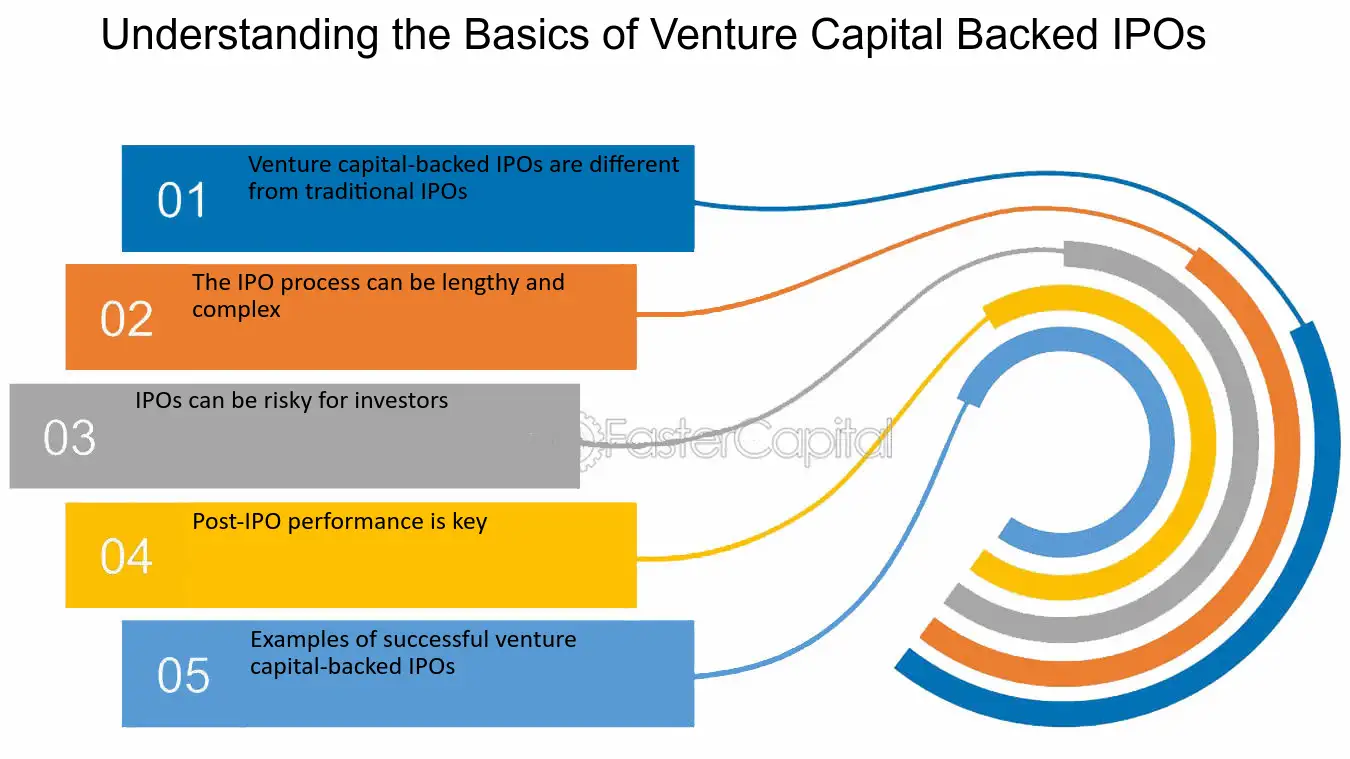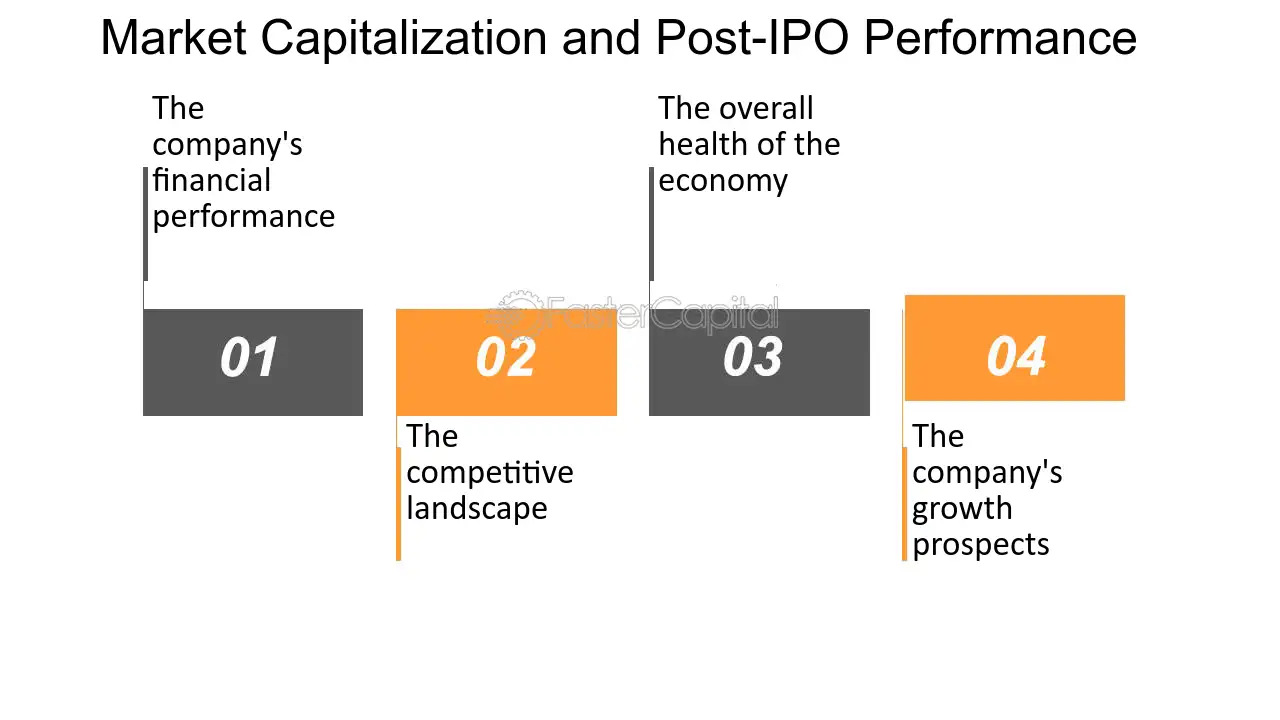Venture Capital-Backed IPO: Explained, Process, Example
A venture capital-backed IPO is a type of initial public offering (IPO) where a company raises capital by selling its shares to the public for the first time with the support of venture capital investors.
Before the IPO, the company typically goes through several rounds of funding from venture capital investors who provide the necessary capital to support its operations and growth. These investors often play an active role in the company’s management and decision-making process.
When the company decides to go public, it hires investment banks to underwrite the IPO and help with the process. The investment banks help determine the valuation of the company, set the IPO price, and market the shares to potential investors.
Once the registration statement is approved by the SEC, the company sets a date for the IPO and starts marketing the shares to institutional and retail investors. The shares are typically offered at a discount to institutional investors, who buy large blocks of shares, and at the IPO price to retail investors.
On the day of the IPO, the company’s shares are listed on a stock exchange, and trading begins. The price of the shares can fluctuate based on market demand and investor sentiment.
An example of a venture capital-backed IPO is the IPO of Facebook in 2012. Facebook raised $16 billion in one of the largest IPOs in history, with support from venture capital investors such as Accel Partners and Peter Thiel’s Founders Fund.
What is a Venture Capital-Backed IPO?

A Venture Capital-Backed IPO, or Initial Public Offering, is a process through which a privately held company offers its shares to the public for the first time. This allows the company to raise capital by selling a portion of its ownership to investors in the public markets.
Unlike a traditional IPO, where a company may go public to raise capital for expansion or to provide an exit strategy for early investors, a Venture Capital-Backed IPO typically involves companies that have received significant funding from venture capitalists.
Venture capitalists are investors who provide capital to startups and early-stage companies in exchange for equity. These investors take on higher risks in the hopes of earning substantial returns when the company goes public or is acquired.
When a venture-backed company decides to go public, it typically means that it has reached a stage of maturity and growth where it believes it can attract public investors. Going public can provide the company with increased visibility, access to additional capital, and a currency for potential acquisitions.
During a Venture Capital-Backed IPO, the company works with investment banks to underwrite and sell its shares to the public. The investment banks help determine the initial offering price, market the shares to potential investors, and facilitate the trading of the shares on the stock exchange.
Overall, a Venture Capital-Backed IPO is an important milestone for a company that has received venture capital funding. It allows the company to transition from being privately held to being publicly traded, providing new opportunities for growth and investment.
The Process of a Venture Capital-Backed IPO
When a company decides to go public through an initial public offering (IPO), there are several steps involved in the process. This is especially true for venture capital-backed IPOs, where the company has received funding from venture capitalists.
Once the investment bank is selected, the company will work with them to conduct due diligence. This involves a thorough examination of the company’s financials, operations, and legal matters. The investment bank will also help the company prepare for any regulatory requirements and ensure compliance with securities laws.
After the due diligence process is completed, the company and the investment bank will begin marketing the IPO to potential investors. This may involve roadshows, where company executives and representatives from the investment bank meet with institutional investors to present the investment opportunity.
After the IPO, the company will continue to work with the investment bank to ensure a smooth transition to being a public company. This may involve investor relations activities, such as quarterly earnings reports and investor conferences.
An Example of a Venture Capital-Backed IPO

One notable example of a venture capital-backed IPO is the initial public offering of Facebook in 2012. Facebook, founded by Mark Zuckerberg in 2004, quickly gained popularity and became one of the leading social media platforms worldwide.
Before going public, Facebook received significant investments from venture capital firms such as Accel Partners, Greylock Partners, and Peter Thiel’s Founders Fund. These investments helped fuel the company’s growth and expansion.
When Facebook decided to go public, it filed for an IPO with the Securities and Exchange Commission (SEC). The IPO process involved several steps, including preparing a prospectus, conducting roadshows to attract potential investors, and setting the initial offering price.
On May 18, 2012, Facebook debuted on the NASDAQ stock exchange under the ticker symbol “FB.” The IPO was highly anticipated, with a valuation of over $100 billion, making it one of the largest in history.
However, the IPO faced some challenges, including technical glitches that delayed the trading of Facebook’s shares and a decline in stock price shortly after the IPO. Despite these initial setbacks, Facebook’s stock eventually rebounded, and the company continued to grow and innovate.
Facebook’s IPO demonstrated the potential for venture capital-backed companies to go public and raise significant capital. It also highlighted the risks and challenges associated with IPOs, particularly for high-profile companies.

Emily Bibb simplifies finance through bestselling books and articles, bridging complex concepts for everyday understanding. Engaging audiences via social media, she shares insights for financial success. Active in seminars and philanthropy, Bibb aims to create a more financially informed society, driven by her passion for empowering others.
